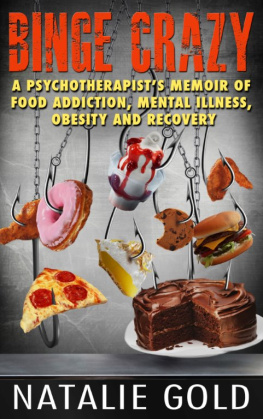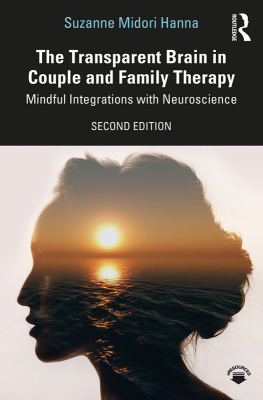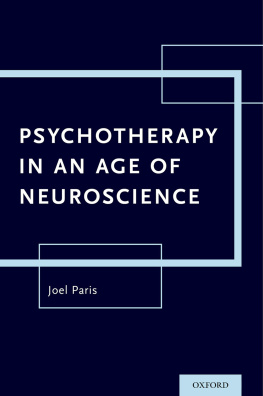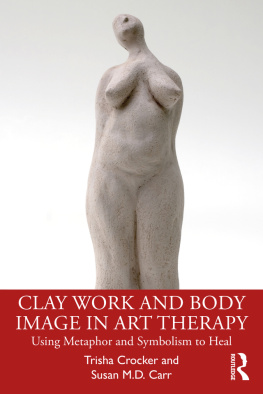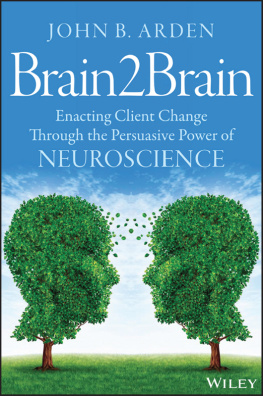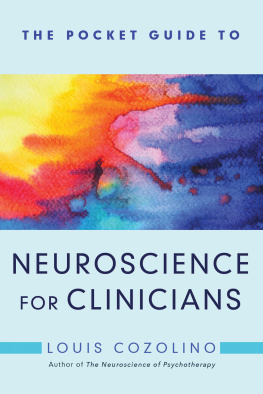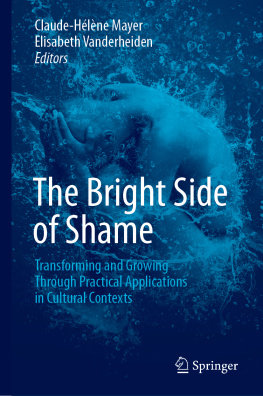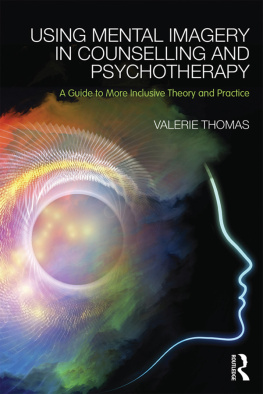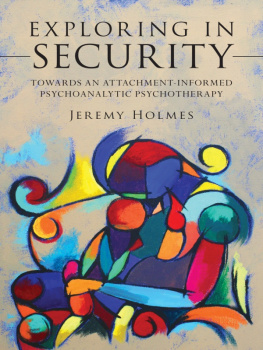Afterword
This work began its life as a Masters in Counselling thesis. I graduated with First Class Honours from the University of Auckland, New Zealand, in May 2013 after two years of part time study, completed while also working full time as a counsellor. I was pleased that I chose to write about a subject that fascinated me, as that made reviewing the literature more of a pleasure than a chore and I was able to retain my motivation. One of the things that made my chosen topic hard going was the fact that many of the texts that I was reviewing assumed more than just a lay persons knowledge of neuroscience and they often quoted very in-depth chemical and mathematical processes. To address this, I slowed the progress of my study by reading some books on basic neuroscience. This gave me enough working knowledge to sift through the readings, but I am very aware that it would take years that I dont have to understand everything to the fullest level. Some readings were little more than advanced mathematical and chemical equations! However, I have been careful to make sure that I fully understood what I have included in this book.
The further difficulty with the neuroscience readings was that even when the authors were explaining the neuroscience, sometimes they missed vital pieces of the picture that they were attempting to illustrate, perhaps assuming what they already knew as authors to be common knowledge. I found this frustrating, because I would reread sections several times only to find that not enough information was given to make things clear to me. This meant I had to use other readings and cross reference them to gain understanding of the first, as well as accessing dictionaries of neuroscientific terms.
Narrowing down the material that I read was problematic. The field is so wide and there is just so much out there. Often the title is no indication of the research contained within. I would enter areas of neuroscience that I am interested in into the data bases that I use and literally hundreds, sometimes thousands, of available texts came up. Some that I printed off turned out to be just what I was looking for and others turned out to be irrelevant, but I couldnt find this out without wading through most of the text. This was also the case with books that I borrowed from libraries.
Because I was heavily committed in other areas of my life, I found it frustrating when some of the time that I put into my study turned out not to further my study into the topic I had chosen. I wanted to concentrate on the known neuroscience that would make a difference to counsellors as they work with their clients, relating to plasticity, neurons that commonly fire together becoming wired together, emotions and their chemical processes (and how those relate to behaviour), and memory and learning, etc. I also wanted to look at abnormal brain function, because I believe it is often the case that when people come to counselling and are unable to make progress to change their behaviours, trauma to the brain, abnormal brain chemistry or lack of development in certain neurological areas can be the cause.
I think it is important for counsellors to be able to recognize the possibility that some people are constrained by more barriers than others because of the internal workings of their brains. And it is also important to be able to differentiate between what is the result of behavioural choice and what is the result of abnormal brain function.
Another issue for me was figuring out where the line was between what I could use in terms of observed data and the theories drawn from that data. I had thought that I would be researching data that would provide only clear facts about how the brain works but this has turned out not to be the case. The observable functions of the brain are often on a minute scale. The interactions between the different parts and the different parallel processes are incredibly complex. And because of this, I was really struck by how much we really dont know about the way that the brain works. Study in this area is very much in its infancy (particularly study which involves the human brain) and probably comparable to what doctors of physical health knew about the way the body works two or three hundred years ago.
We have experts in the field of mental health and what they know is much more than a lay person knows. But what they know is also very much only a beginning in terms of all there is to know about the brain and how it works.
Much of the research I read is theory drawn from observed data. This means that within a decade the theory may be outdated, or at the very least, modified to incorporate what is yet to be learned. But all I could do is to go on the very best theories that are available now. In some places in this book I had to acknowledge that there is more than one possible theory currently being applied and that experts disagree.
Research that I read was naturally based on the narrow focus of what each researcher was interested in and there are so many functions of the brain, and subsets of those processes, that initially it was very difficult to see a whole picture because I was lost in a sea of details. Some detail was at the very micro level and it was hard to relate that to what I was learning about macro level processes. It emphasized for me again how complex the brain is, and even more so when I realized that the brain drives the entire physical body.
I read a valuable book (which didnt progress my own study that much, but which was valuable scaffolding for what I am trying to absorb) on integrative neuroscience, which was an overview of main theories and how all they might fit all fit together. It ranged from macro to micro level in terms of processes in the brain and connected these together, which made more sense of things for me. In addition, it gave insight into all the ways of researching and studying the brain, often cited in the texts I was reading (Gordon, 2000).
I started to do a bit of reading into social neuroscience, which is the study of how neuroscience relates to human behaviour, and the way in which people interact with each other and choose behaviours. It arose from the field of psychology as psychologists have always been interested in scientifically quantifiable research into behaviour and some of them have begun to realize that it is now possible to study not just external outer behaviour, but the function and internal motivation for that behaviour from within. The fields of psychology and neuroscience are moving closer together and it is important that the field of counselling (which is more person centred, taking into account the clients own goals, and ability to make change) is not left behind.
I believe it will be essential in the future for counsellors to have enough knowledge of neuroscience to remain relevant and in touch with the knowledge base that will be emerging to knit several disciplines together, not to subsume each other, but to have common threads of connection, providing an integrated set of areas of expertise rather than disciplines operating in opposition or isolation.
When I first began this project my children were growing up and not needing the close attention that I had once given them, and the time seemed right. And then, soon after I was already engaged in my work, I found myself with full custody of my first grandson, just over 1 year old. The time was not really right anymore, but I had left the starting blocks and did not want to pull out of the race. In fact, I was determined to complete it anyway.
I had a personal reason for wanting to do this project: my oldest son, and the father of my grandson, was experiencing mental health problems. Doing this work was both a way to distract myself from some very upsetting things in my life and a potential pathway to being able to discover something which could change his circumstances, and therefore mine, and those of the rest of my family. I was hoping that along the way I might come across some knowledge which would be relevant and helpful to his situation and that we could put it to good use.
Next page

